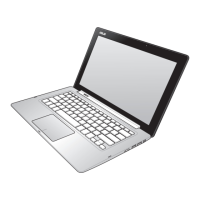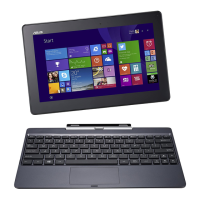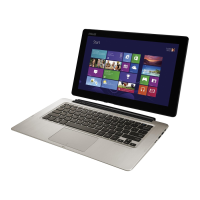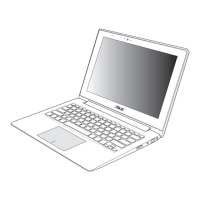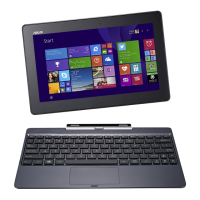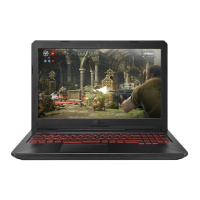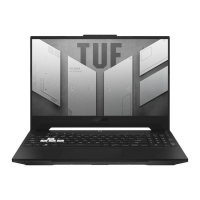Do you have a question about the Asus Transformer Book Flip TP200SA and is the answer not in the manual?
| Display Size | 11.6 inches |
|---|---|
| Operating System | Windows 10 |
| Battery Life | Up to 8 hours |
| Display Resolution | 1366 x 768 pixels |
| Graphics | Intel HD Graphics |
| Connectivity | Wi-Fi 802.11ac, Bluetooth 4.0 |
| RAM | 2GB or 4GB |
| Storage | 32GB/64GB eMMC |
| Weight | 1.2 kg |
| Battery | 2-cell Lithium Polymer |
| Ports | USB 3.0, USB 2.0, HDMI |
| Display Type | LED-backlit |
| Processor | Intel Celeron N3050 |
Provides an overview of the manual's content and structure.
Explains icons and typography used to highlight key information.
Essential safety advice for using, caring for, and disposing of the Notebook PC.
Details the hardware components of your Notebook PC.
Details the physical components and ports of the Notebook PC.
Guides on initial setup, charging, and powering on the Notebook PC.
Guides on using touch screen gestures and touchpad for navigation.
Explains function keys, Windows keys, and keyboard shortcuts.
How to rotate the display panel for different usage modes.
Guides through initial Windows 10 setup and using the Start menu.
Covers managing apps, multitasking features like Snap, and the Action Center.
Managing Wi-Fi, Bluetooth, Airplane mode, and powering off/sleep states.
Understanding POST and how to access BIOS settings.
Configuring BIOS settings and performing system recovery options.
Answers to common hardware issues like display, battery, touchpad, and audio problems.
Answers to common software issues like boot problems and system lag.
Information on Blu-ray, modem compliancy, CTR 21, and network compatibility.
Details on FCC, CE, IC RF exposure limits and interference statements.
Information on wireless operation channels and restricted frequency bands in France.
Safety notices, compliance with REACH, and hearing loss prevention.
Cautions for lithium batteries, recycling services, and regional environmental notices.
Safety information for optical drives, including laser warnings and regulations.
